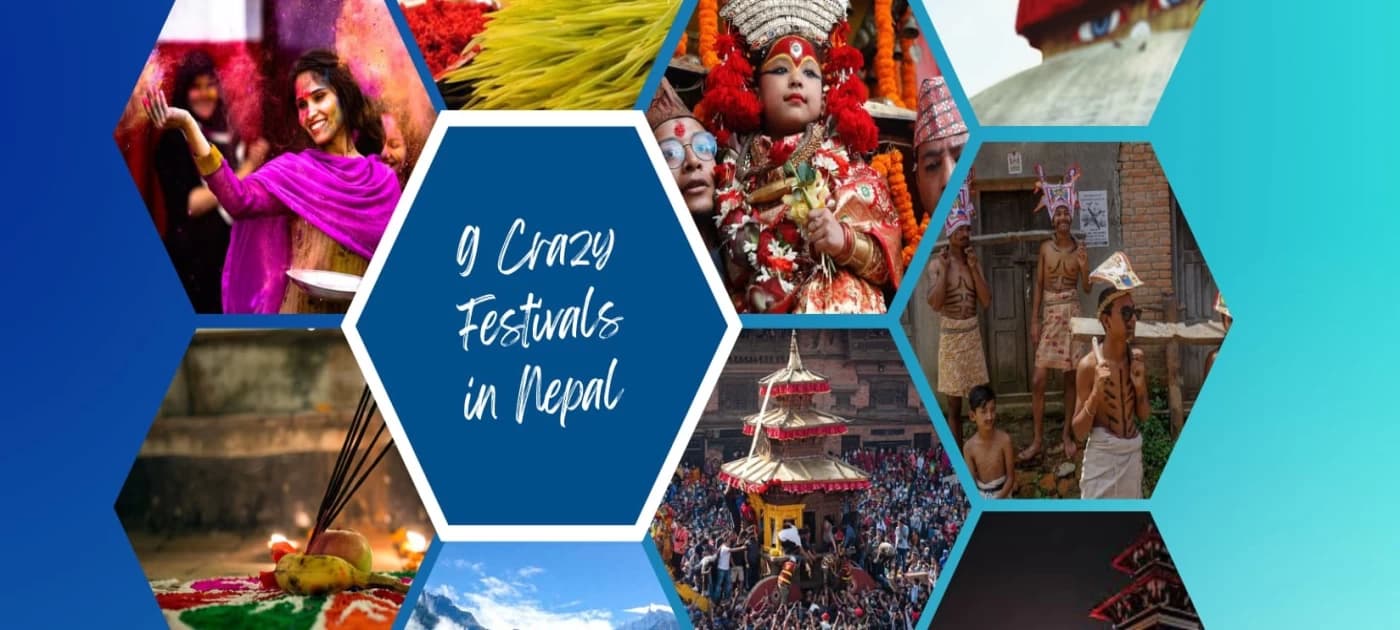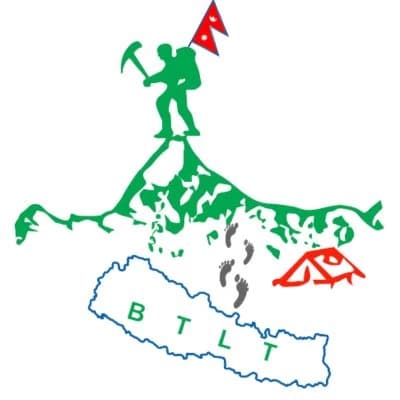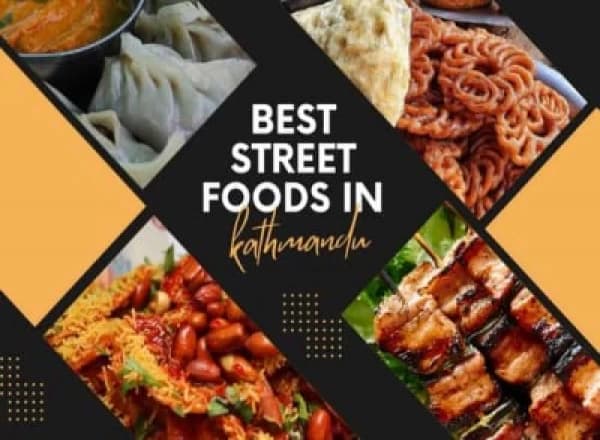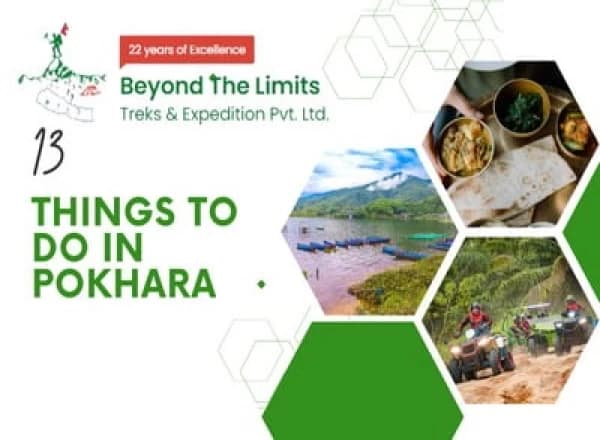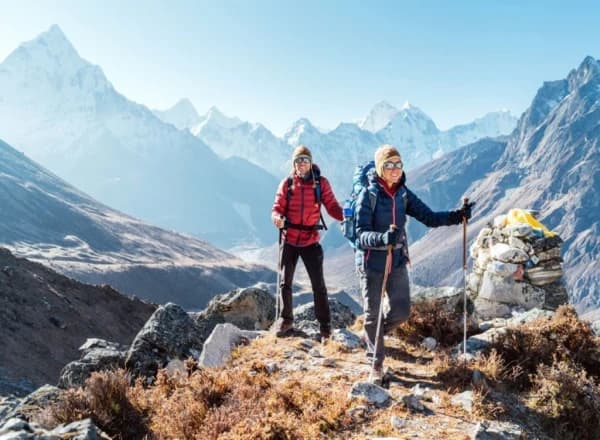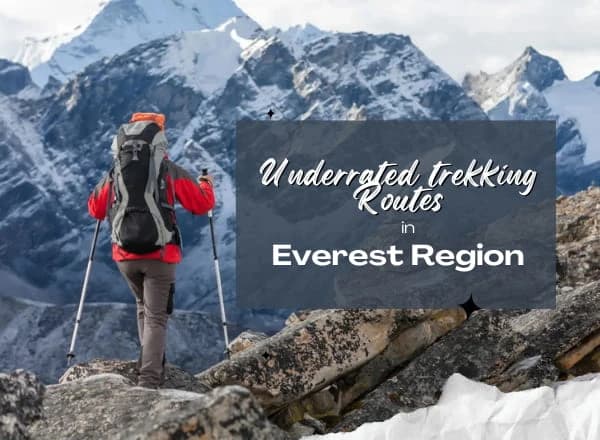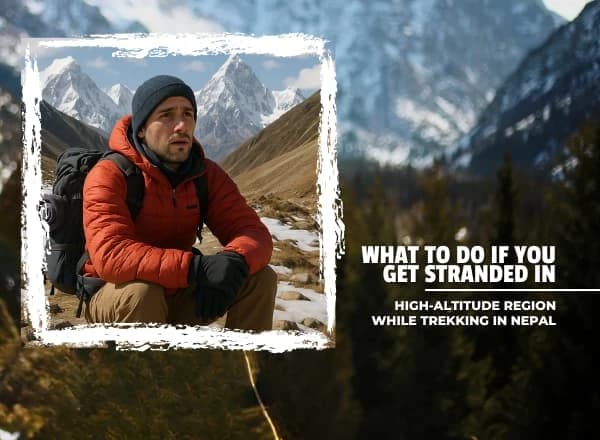The word Nepal is synonymous with the Himalayas and mostly Everest for people from around the world. Although Nepal is indeed a Himalayan kingdom, people miss mentioning the vibrant festivals and delicious Nepali cuisines, which we Nepali take pride in. Unlike other countries, every second day in Nepal is a reason to celebrate, as there are hundreds of festivals for different ethnic communities. From Indra Jatra of the Newari community to Sakela Ubhauli of the Kirat community, you will witness cultural richness and harmony among the people of varied religions. Among hundreds of festivals in Nepal, few festivals are worth visiting Nepal.
Top 9 Crazy Festivals in Nepal top Witness
In this blog, Top 9 crazy festivals of Nepal to Witness, we will mention the uniqueness of these festivals, that makes it the best:
1. Indra Jatra:

The Newari community of Nepal is known for their joyful festivals and unique variety of delicious cuisines. One of the festivals they celebrate with utmost joy is Indra Jatra, which commemorates the time when the Lord of Heaven, Indra visited Kathmandu in a human form to gather Parijat, a night jasmine flower, as required by his mother for some ritual. However, he got caught by the locals as a common thief and failed to return. Later, when King's mother descended to Kathmandu searching for her son, people realized who they were and celebrated with feasts, and processions, rejoicing in the presence of their divine guests. Today Indra Jatra is celebrated for 8 days in the month of September to honour the recently deceased and to pay homage to Lord Indra and his mother Dagini to bless their coming harvest, as promised by the Goddess Dagini before going to Heaven after the event.
The festival starts after erecting a wooden log called Ya Sin outside the Hanuman Dhoka Palace decorated with Indra's flag. This festival offers a surreal experience to the visitors, with the piles of Samay-baji in the different locations representing luck, health, prosperity and longevity, people jostling with each other to drink homemade liquor from the mouth of deity Swet Bhairav as a blessing, the living Goddes Kumari touring the city in her chariot along with Ganesh and Bhairav, masked dances like Bhairav dance, Sawa Bakhhu, Dya Pyakhan, and Lakhey dance accompanied by traditional musical instruments, and the appearance of Pulukishi-the Indra's vehicle and Majipa Lakhey-the protector of Children. Since it is one of the major festivals of the valley, heads of the state visit Hanuman Dhoka to get blessing from the Kumari and other gods and goddesses. The dance, the sound of traditional musical instruments, people chanting the name of gods and goddesses, the large feast, and people pulling chariots and paying respect to the chariots of Kumari, Bhairav and Ganesh is a sight to behold.
2. Holi:

The festival of colour, Holi is celebrated by people of all religions in Nepal. The festival falls in the month of February/March and marks the beginning of Spring and the end of the cold winter. The beginning of the festival is marked by placing a long bamboo stick decorated with colourful clothing in Basanatapur. For people living in Kathmandu, Basantapur is the junction to celebrate this colourful festival. People from all over Kathmandu gather in the area and wish each other by smearing coloured powder and throwing water balloons. The festival becomes even more lively with live concerts, people dancing to the tunes and Holi parties with several foods.
And for those celebrating at home, the celebration is not any less. Friends, families and relatives visit each other's households and wish each other a colourful life as that of the colours of Holi. Families organize feasts and Holi parties inviting their close ones. On this day, people also believe in letting go of any regrets and misunderstandings by mending their broken relationships and starting a new bond. Hence, this festival is not only about colours but also about togetherness and sharing happiness.
Check This Out:
3. Gai Jatra:

Gai Jatra is a unique festival of Nepal that celebrates death. The festival started in the Medieval period when King Pratap Malla requested people who lost their loved ones to bring a cow in a procession with a funny dress and appearance to cheer his mourning wife. After the event, the queen realized she was not the only one grieving and cheered up. With the realization that death is inevitable, this festival has been preserved and celebrated annually in Nepal. Today, this festival is celebrated with utmost joy and enthusiasm, where the deceased's family members participate in the parade with children dressed as cows on the streets to celebrate and honour the departed souls. It is believed that Cow is the carrier of souls to heaven. Hence Cow is a major attraction of this festival.
Though Gai Jatra is popular as the celebration of death, it is a fun-filled festival celebrated with joy and laughter in the memory of the deceased. This festival is also a gentle reminder that people around us are also grieving the loss of their loved ones, and despite this, we continue to live our life. The parade consists of delicious Newari items, people dressed in extravagant costumes and Newars dressed in their cultural attire, singing and dancing to the tunes of the authentic Newari instruments. Hence, this festival is the best way to learn about the cultural richness of the Newari community and Nepal.
Glimpse of Gai Jatra
4. Biska Jatra:

Biska Jatra or Bisket Jatra is the Newari festival celebrated during the Nepali New Year. Biska Jatra is celebrated for nine days, starting fine days before the Nepalese New Year. Although the festival is celebrated for Nine days, the main events happen on the first, fourth, fifth, sixth and last day. During other days of the festival, people mainly visit the chariot of Lord Bhairav and Bhadrakali and worship, offering meat, fish, eggs, and other items.
On the first day of the festivities, a tug of war is organized between the locals from the eastern and western sides of Bhaktapur to take the chariot to their part of town. On the fourth day, a 25 m-long wooden pole called Lyasing Dya is raised. On the fifth day (Nepali New Year), the Newari community worships the Lyasing Dya. Later, the Lyasing Dya is pulled down, and the chariot of Bhairav and Bhadrakali are pulled to clash at midnight, symbolizing copulation. On the sixth day of the festival, the festival moves from Bhaktapur Durbar Square to Thimi and Bode, where the celebration gets grand. In Thimi, people organize Sindoor Jatra, where people dance, sing, and throw orange vermillion powder on each other, carrying 32 small chariots with images of gods and goddesses. In Bode, a resident of the Newari community pierces his tongue with an iron spike and moves around the town with a bamboo rack. On the last day of the jatra, a final tug of war is organized, and the chariot is pulled towards the Nyatapola temple and remains dismantled until the next Biska Jatra. This Nine day long festival is all about the unique culture of the Newari community, which includes traditional dances, seasonal tunes of flute, and drums, chariots, variety of Newari cuisines, and the enthusiasm and dedication of the community to preserve and continue their tradition.
5. Dashain:

Dashain is the most auspicious festival of the Hindu religion, with the longest Public holiday of 5 days. According to Hindu Mythology, the festival marks Goddess Durga's victory over the demon Mahisasur, who created trouble for the Gods in Devalok. So, Nepalese celebrate Dashain as the victory of good over evil. Therefore, Nepalese living far from home return to their families to spend quality time in Dashain. During the festivities, people buy new clothes, eat different meat varieties, clean their homes, families gather around, play cards and swings, fly kites, and be grateful for the things they have and share their memories with others.
Although the festival is celebrated for ten days, the main events happen on the first, seventh, eighth, ninth and tenth day. The first day is Ghatasthapana, where people fill a pot with Ganga Jal and sow Jamara (sacred grass), which we put in the day of Dashain. The seventh day is Fulpati, in which people clean their houses and bring nine different types of flowers and leaves and is worshipped along Jamara in the sacred place of the house. The eighth day is Maha Ashtami.
On this day, goddesses Durga and Kali are worshipped and people sacrifice ducks, goats, hens, and buffaloes and consume the meat as a Prasad from the Goddess. People store the meat of this day for up to 7 days. The Ninth day of Dashain is Navami, the day of Viswakarma. In Navami, people worship vehicles and household machinery like axe, khukuri and knives. The main day is Dashami or Dashain, Nepalese visit the households of their relatives and families to put on tika and get blessings.
6. Tihar:

Tihar, the festival of lights and beautiful marigold flowers, is the second-biggest festival in Nepal. This festival is celebrated for Five days, where each day is important and is enjoyed equally. During Tihar, the Nepalese worship crows, dogs, cows, oxen, and brothers.
The first day is Kag Tihar, the day of the crow. Crow is believed to be the messenger of Yama, the god of death. So people worship crow by offering rice to discard any bad news. The second day is celebrated as Kukur Tihar, the day of the dog. People worship dogs to cherish the beautiful bond between humans and dogs, and also, it is believed that Yama has two guard dogs. The third day is celebrated as Gai Tihar, the day of the cow. On this day, people worship cows in the morning, as they signify prosperity and wealth in Hindu culture and the evening, people worship Goddess of wealth, Laxmi. This day is celebrated most amazingly, as people clean their homes and decorate them with flowers and light beautiful electric and traditional lamps. From this day, children gather around their locality and play Deusi Bhailo, where they sing, dance and give blessings to homeowners and receive food items and money in return. The fourth day is celebrated as Goru Tihar and Mha Puja.
On this day, people worship ox, and the Newar community performs Mha Puja. Mha Puja marks the beginning of a New Year for the Newar community. Hence, on this day, the families reunite and worship themselves. Later, they enjoy delicious foods like boiled eggs, beaten rice, beans, meat, and many more. The last day is celebrated as Bhai Tika. On this day, sisters put seven different colour tika on their brother's forehead, praying for their success, growth and longevity. Sisters also offer gifts and delicacies, and in return, brothers offer gifts or money along with the promise to keep their sisters safe.
With buildings covered in lights, colourful rangoli at the gate of every house, beautiful marigold flowers on the way, and local vendors selling sweets, decorative items and pictures of gods and goddesses, the vibe of this festival is something you will not want to miss.
7. Tiji Festival:

Tiji, the Tibetan-Buddhist festival, is one of the oldest and grand festivals celebrated in Lo-Manthang of Upper Mustang. Just like the other festival of Nepal, this festival is also a celebration of the victory of good over evil. According to the mythology, the popular deity of Vajrayana Buddhism, Dorje Jono defeated the demon to save the kingdom from the havoc. The festival is celebrated for three days, during which the monks of Choedhe monastery perform masked dances enacting the tales of defeat.
On the first day, the "Tsa Chham" dance is performed by the Monks, highlighting the birth story of Dorjee Jono, born as a Demon's son. The demon was known in the kingdom for creating havoc. During the performance, you can witness the monks reenacting the tormen of the demon on the inhabitants of Mustang. On the Second day, monks perform the "Nga Cham" dance, where Dorje Jono tries to return the demon to the Buddha Realm. On the last day, the monks perform the "Rha Chham" dance highlighting Dorje Jono's triumph over the evil demon and vanishing from Mustang. During this enactment, the monk enacting Dorje Jono throws an effigy. The effigy, made from barley and represents the demon. With this defeat, the Dorje Jono brings peace and prosperity to the forbidden kingdom and hence is celebrated every year in the hope of spreading peace, harmony, and prosperity throughout the world, as the name Tiji also refers to prayer for world peace.
The Tiji festival is known for its vibrant and colourful celebration, which is different from what you will see in the streets of Kathmandu. This festival highlights the belief, culture and traditions of the people living in Mustang. Hence, it is a great way to celebrate life, as you enjoy this beautiful festival in a place adorned by the Himalayas like Annapurna and Dhaulagiri. The masked dance, colourful elaborated dresses, and the kind people of Mustang make Tiji festival one of a kind in Nepal.
8. Rato Machhindranath Jatra:

Rato Machhindranath is one of the mindblowing street festival organised by the Newar community of Patan. This festival is one of the longest chariot festivals and is dedicated to the valley's rain god. The festival begins before the monsoon hits the valley, where the god of rain and harvest, Rato Macchindranath is carried on 60-foot tall chariot, which tours around different location of Patan. The procession follows a route that traverses Natole, Gabahal, Mangal Bazaar, Sundhara, Lagankhel, Kumaripati, and end at Jawlakhel
One of the major attractions of this festival is the Bhote Jatra, which marks the end of the festival. During this event, a BHOTO, inner vest is displayed, and it is believed that getting a glimpse of the BHOTO brings good luck. The Bhoto is famous not only because it is encrusted with bedazzling diamonds but also because of the story that describes the tale of the Bhoto. After the completion of the festival, the statue of Rato Machindranath and Bhoto is taken to Bungamati and kept until the next Jatra. Although it is a month-long festival, the first 15 days are spent making the chariot, and in the last 14 days, people pull the chariot around different locations of Patan, eat delicious foods and pray for timely rain and enough grain.
9. Mahashivaratri:

The Hindu festival, Mahashivaratri is the night of Lord Shiva, the Hindu deity known as an ideal of creation and destruction. Since the majority of the population of Nepal is Hindu, this festival is celebrated with utmost joy. According to Hindu Mythology, Mahashivaratri is celebrated as a divine union of Lord Shiva and Goddess Parvati, as a day that commemorates the first Tandava Nritya of Shiva that represents creation, preservation and destruction and also the victory of good over evil.
Although there are several reasons for the grand celebration, it is all about celebrating Shiva and his might, grace and wisdom. In Shivaratri, people take fast and visit Shiva temples around their area. The devotees flock to Pashupatinath temple, the holiest Shiva temple in Nepal, located in Kathmandu. The pilgrims offer prayers, sweets, flowers, and fruits and perform puja, lighting lamps and chanting prayers and hymns. During this festival, you can notice hundreds of Yogis and Sadhus covered in ashes. It is believed that Lord Shiva bestows blessings to those seeking Nirvana and awakening on this day. Another interesting thing about Shivaratri is that people consume Bhang and weeds as prasad on the day despite being Illegal in Nepal, as it's Lord Shiva's favourite offering.
In the evening, people light bonfires, sing songs and eat sweets to end this remarkable day.
Conclusion:
The above-mentioned festivals only offer a sneak peek of Nepal and its beautiful culture. If you are interested in exploring Nepal and its beautiful festivals, Beyond the Limit Treks and Expedition offers a wide variety of Festival and culture tours that will blow your mind.
People Also Ask:
1. Why are festivals important in Nepali culture?
✔ Nepal is a beautiful garden of varied religions and ethnicities. And the festivals help us to gain cultural identity and foster a sense of unity. The festivals of Nepal include traditional dance, music, delicious foods, parades, and traditional dress that are different from what you will see in other nations. For Nepalese, festivals are a part of their life that brings them closure to their communities, friends, and families, where they exchange meals, gifts and best wishes. This interaction tends to promote unity and harmony, which is a crucial part of Nepali culture.
2. Which is the most dangerous festival in Nepal?
✔ The Bisket Jatra is known to be one of the most dangerous festivals in Nepal. During the festival, a large crowd is gathered to pull the chariot. So, the chances of getting hurt by the jolts of people are very high.
3. What is the biggest festival in Nepal?
✔ The biggest festivals in Nepal are Dashain and Tihar.
Related Blogs:
Popular Nepal Trips:
Latest Travel Blogs
11 Fun Facts About the Everest Region
Iconic all over the world, the Everest Region has gained lots of name and fame over the years. However, the region is known for very limited things although the beauty of Everest region [...]
Underrated Trekking Routes in the Everest Region Beyond the Classic Everest Base Camp Trek
Exploring the Everest region is a dream come true for many, and the main focus of the region for most of the trekkers is the iconic Everest Base Camp Trek which has long [...]
What to Do If You Get Stranded in a High-Altitude Region While Trekking in Nepal
The Himalayas often have a magnetic pull, ‘mountains calling’ as they say, and exploring these Himalayas is a dream adventure for many people. And the best way to do so is by going on a [...]
